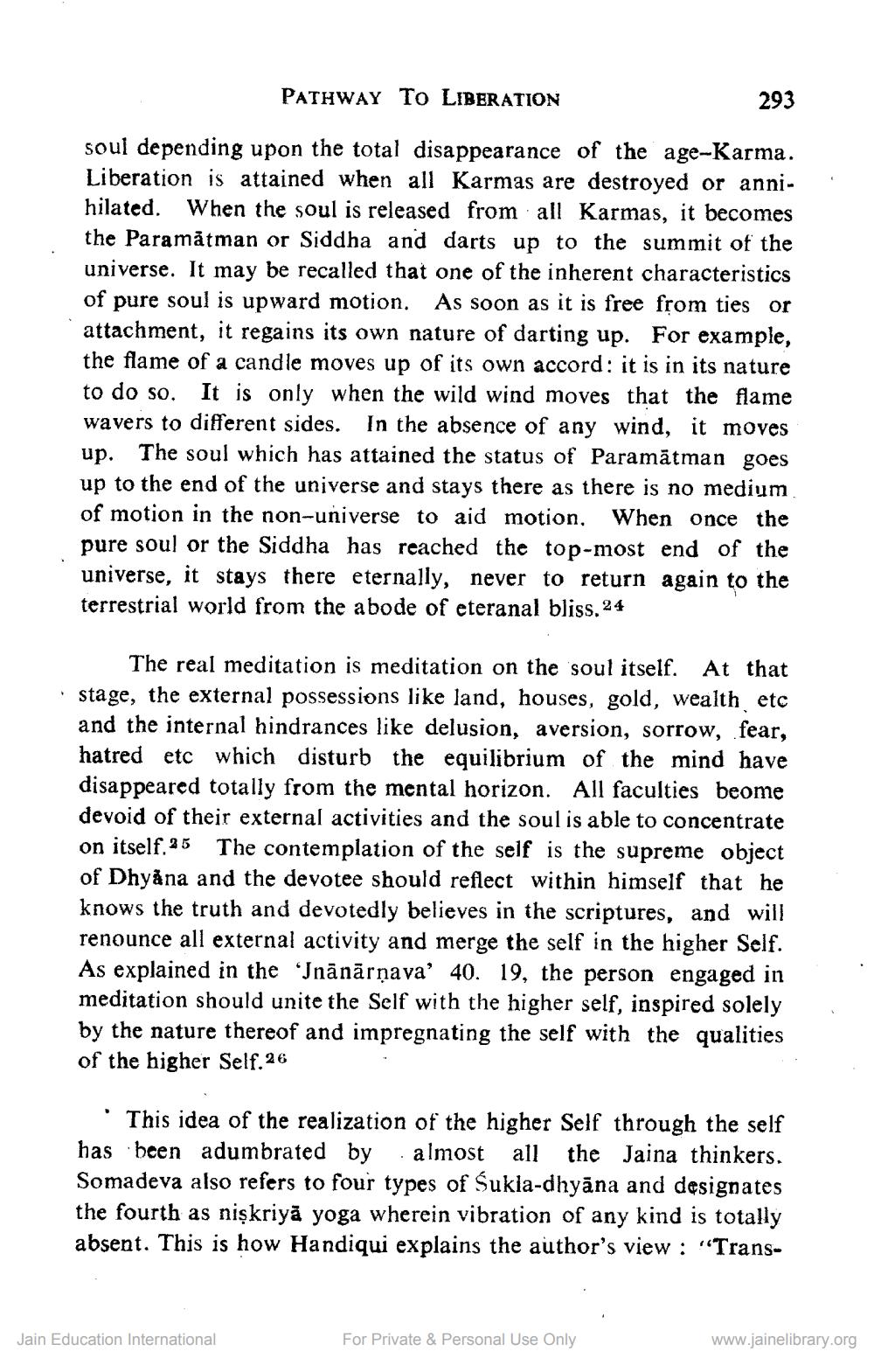________________
PATHWAY TO LIBERATION
293
soul depending upon the total disappearance of the age-Karma. Liberation is attained when all Karmas are destroyed or annihilated. When the soul is released from all Karmas, it becomes the Paramåtman or Siddha and darts up to the summit of the universe. It may be recalled that one of the inherent characteristics of pure soul is upward motion. As soon as it is free from ties or attachment, it regains its own nature of darting up. For example, the flame of a candle moves up of its own accord: it is in its nature to do so. It is only when the wild wind moves that the flame wavers to different sides. In the absence of any wind, it moves up. The soul which has attained the status of Paramātman goes up to the end of the universe and stays there as there is no medium of motion in the non-universe to aid motion. When once the pure soul or the Siddha has reached the top-most end of the universe, it stays there eternally, never to return again to the terrestrial world from the abode of eteranal bliss. 24
The real meditation is meditation on the soul itself. At that · stage, the external possessions like land, houses, gold, wealth etc
and the internal hindrances like delusion, aversion, sorrow, fear, hatred etc which disturb the equilibrium of the mind have disappeared totally from the mental horizon. All faculties beome devoid of their external activities and the soul is able to concentrate on itself.25 The contemplation of the self is the supreme object of Dhyåna and the devotee should reflect within himself that he knows the truth and devotedly believes in the scriptures, and will renounce all external activity and merge the self in the higher Self. As explained in the 'Jnānārņava' 40. 19, the person engaged in meditation should unite the Self with the higher self, inspired solely by the nature thereof and impregnating the self with the qualities of the higher Self.26
This idea of the realization of the higher Self through the self has been adumbrated by almost all the Jaina thinkers. Somadeva also refers to four types of Sukla-dhyāna and designates the fourth as nişkriyā yoga wherein vibration of any kind is totally absent. This is how Handiqui explains the author's view : "Trans
Jain Education International
For Private & Personal Use Only
www.jainelibrary.org




